How to use universal reading screeners to guide next steps for struggling learners
Three times a year you get handed a color-coded spreadsheet of universal screening data. Most likely you take a quick glance, confirm those are the kids who appear to be struggling and move on. However, your universal reading screeners data has really useful information. It can help identify where more information is needed and what gaps a student might have.
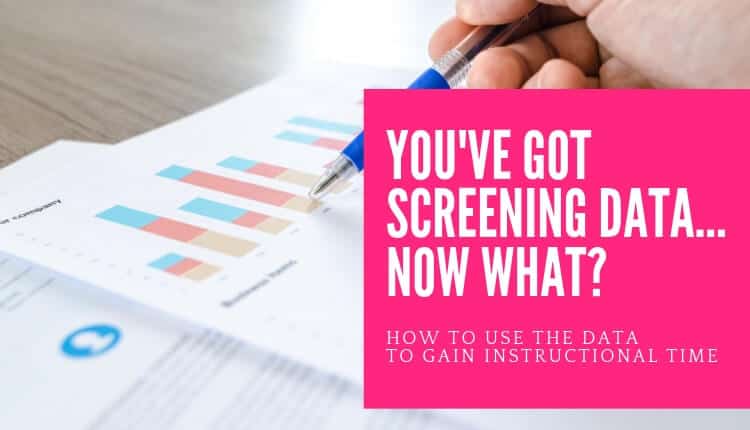
The basics of universal screening
Universal screening is meant to give us a quick peek into a student’s skills to help us to determine whether they are or could be at risk of becoming a struggling learner.
It typically contains many different short assessments, like a 1-minute reading fluency check.
If you’re new to universal screening, you can get more background information from my post A Teacher’s Guide to Universal Screeners.
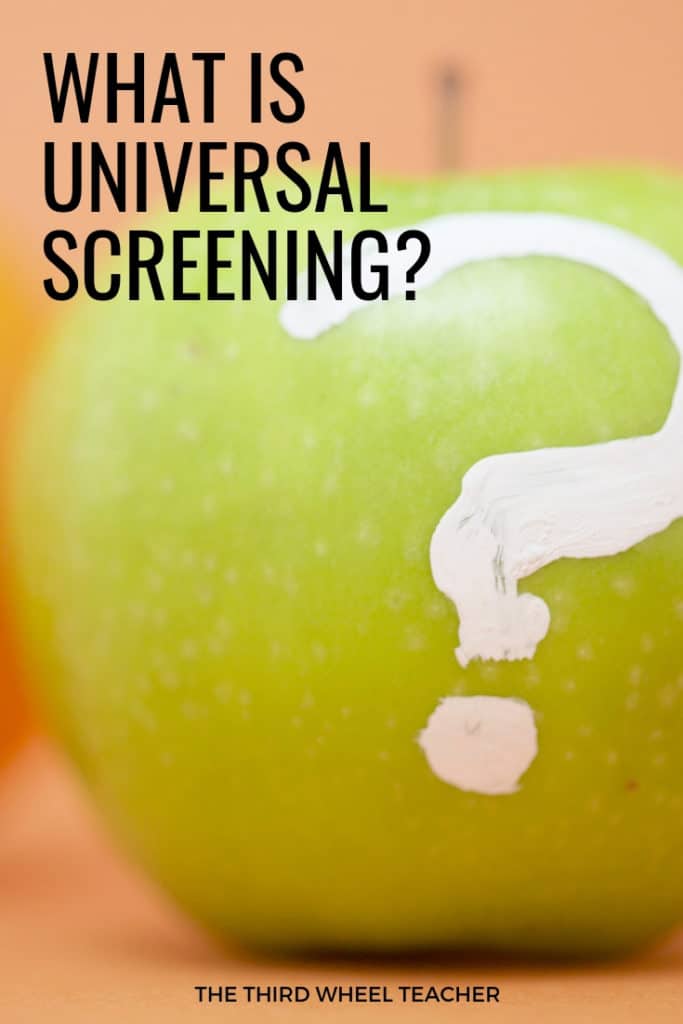
Diving into your screening data
Typically, universal screening data comes to you already sorted or color-coded.
This is because most computerized systems look at your student’s scores compared to a national norm sample of students in the same grade level.
Your data from reading universal screeners also includes the actual score your student received. For reading fluency, for example, you will see how many words per minute the student read and how many errors they made.
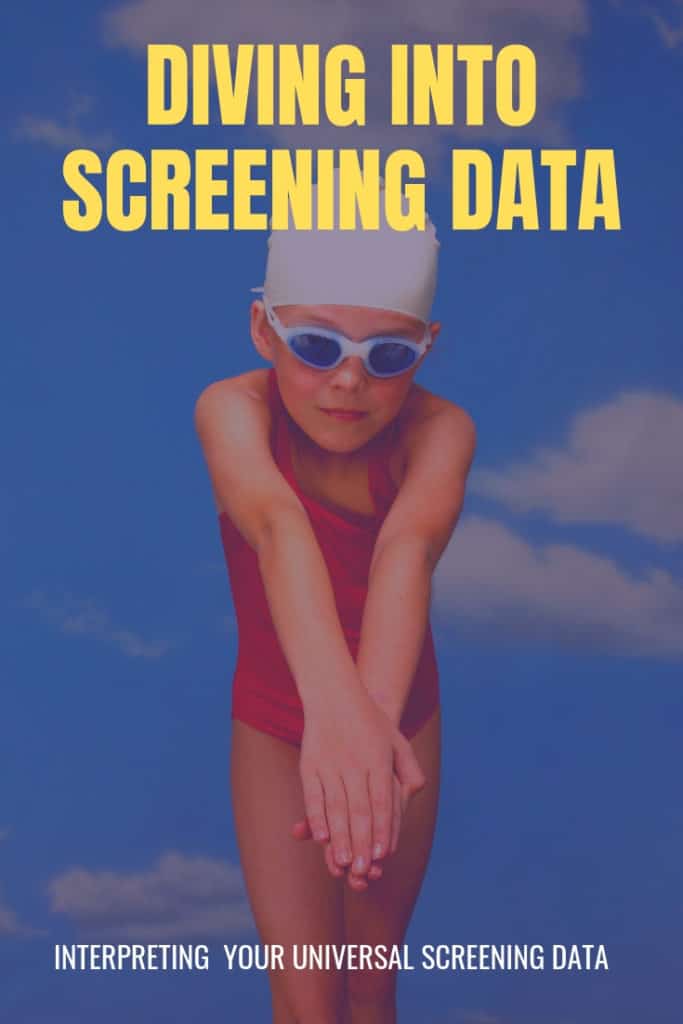
Both of these pieces of data are extremely helpful for very different reasons.
Using the reading screening data to identify struggling learners
When you look at your overall data, any student who has scored below the 25th percentile is considered to be significantly at-risk for learning difficulties.
Some research even suggests that a 10 wpm difference from the 50th percentile score should be considered a significant concern necessitating a closer look (Tindal & Hasbrouck, 2006).
Therefore, all of these students are likely to need additional diagnostic assessments to identify skill gaps and plan targeted interventions.
As the year goes on, you will also want to watch for students who have significant drops in their percentile rank across the assessment periods.
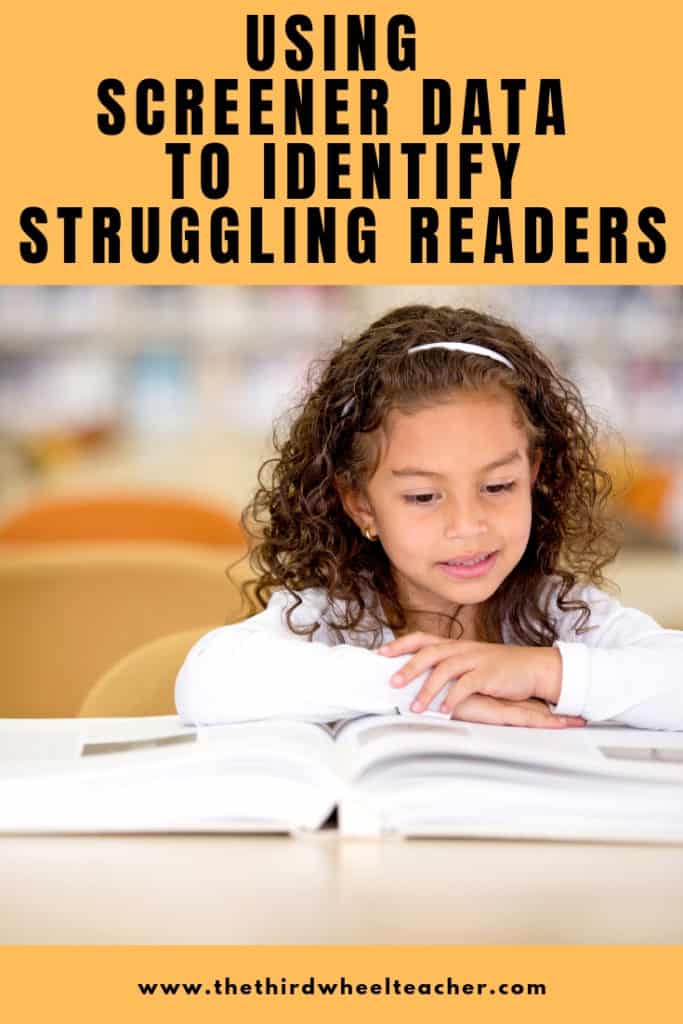
This indicates the student is not making adequate growth compared to the norm sample, and it suggests that more information is needed.
This second group is often overlooked because they are not always your lowest scoring students. However, if a child drops from the 80th percentile to the 40th from the beginning of the year to the middle, the child definitely warrants a second look.
One thing to consider is if the trend continues, will this student end up in the at-risk category? If so, we have a chance to prevent that from happening.
Looking for clues in the data

As I mentioned earlier, universal screening data offers us clues as to where further assessment or intervention may be necessary.
While it doesn’t give us the answers, it often provides us with a large, flashing arrow pointing in the right direction.
For the purpose of this article, I’ll focus on the two assessments given to older students – reading fluency and comprehension.
However, the screening data from young students should also guide next steps. I’ll share more about that in an upcoming post.
Digging Deeper Reading Fluency & Comprehension Screeners
The easiest spot to look at this data is with reading fluency and comprehension.
So many people argue that reading fluency is so much more than words per minute, and I agree after a student reaches a certain point the value of a reading fluency measure diminishes.
There is very little difference between the reader who can read 130 words per minute and the one that can read 150 words per minute when it comes to fluency.
However, our intervention efforts were never going to be aimed at this group in the first place, and fluency data is helpful for struggling readers and to rule out fluency or decoding issues if a student struggles with basic comprehension.
More specifically, a closer look at fluency data can give us insight to help us move forward with planning diagnostic assessments.
Data available from a reading fluency and comprehension screeners
Fluency screener data typically includes:
- Oral reading fluency rate
- Number of errors
- Accuracy
Oral reading fluency is provided in words read per minute. Errors is the total number of uncorrected errors within the minute, and accuracy looks at the overall percentage of words read correctly.
Comprehension screener data typically includes:
- Percentage correct
- Number of errors
Comprehension screeners are typically given as MAZE or CLOZE reading assessments, where every 7th word is replaced with three possible choices. Students are told to work through to select the word that makes sense as they read.
Data is usually provided to tell you how many they student correctly identified and how many errors they made.
Identifying red flags in the reading data
When you get the data in your hands, it can be overwhelming. Start by looking at the big picture, which is identifying students at-risk of academic failure.
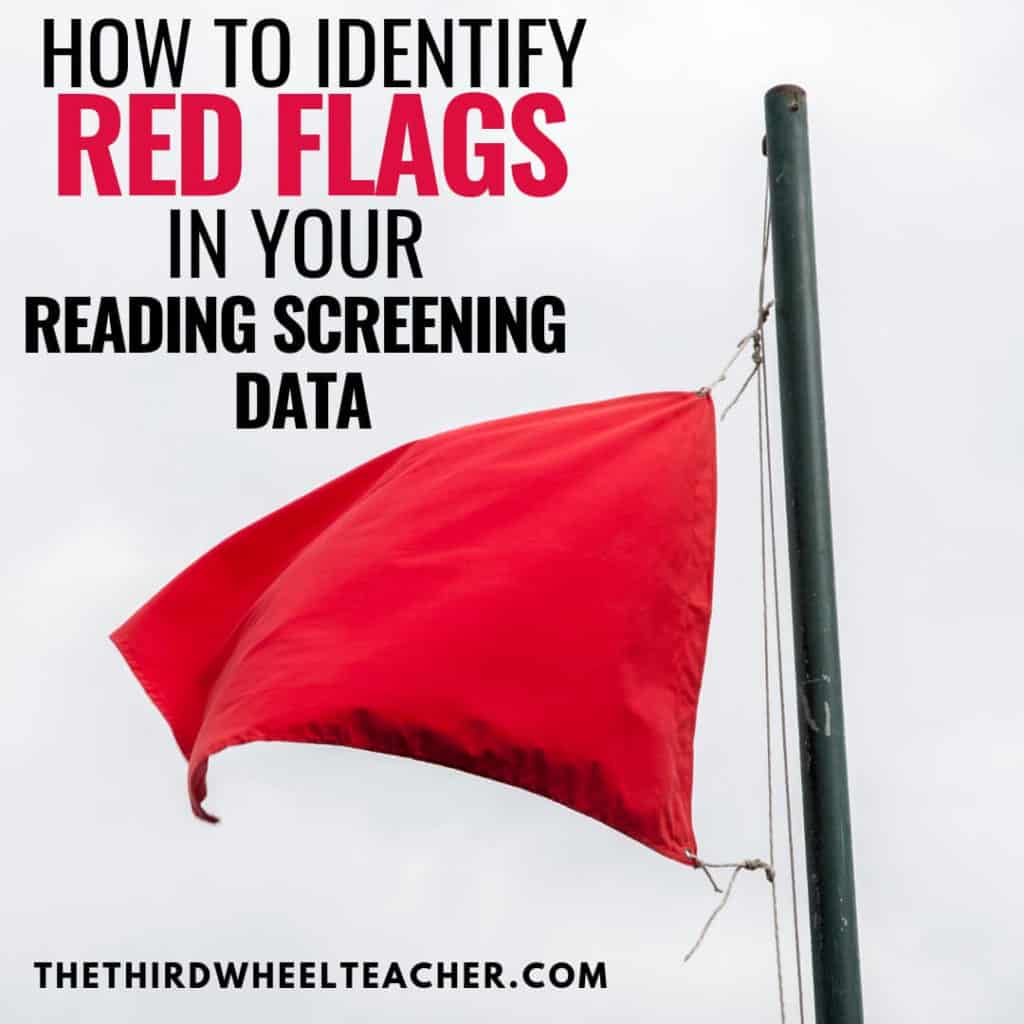
For mid-year and end-of-year screeners, look for students who have had significant drops in their percentile rank. This indicates they are not making adequate progress, despite currently being within the “safe zone”.
While percentile rank gives you a good starting place, there are a number of other pieces of data you can get from screening data.
Accuracy Data
Consider accuracy data. When a student is below 93-95% accuracy, that indicates the passage was too difficult for them to decode. This means they were making frequent errors – these could be decodable words or sight words.
If you have access to the individual student data, consider taking a peek to look for patterns. This can help you determine whether the issue may be phonics-based, suggesting you will need to give the student a decoding inventory, or difficulty with sight words.
Diagnostic tools for decoding and sight words
If you don’t have access to the original data, consider administering a quick sight word inventory and a phonics inventory to get a better feel for where the student’s struggle may be most prominent.
Free Phonics Inventories
Free Sight Word Inventories
Of the choices above, my personal favorite to identify gaps in phonics and decoding is the Informal Decoding Inventory.
However, any of the inventories above can help you determine where the student’s decoding difficulties stem from.
Selecting Interventions for Accuracy Issues
The most likely interventions for students with high error rates/low accuracy are decoding or sight word focused so gathering specific data on gaps and strengths can help you more effectively target intervention.
Low fluency without Accuracy Issues
When a student only reads a few words within the minute, we can assume that the passage was significantly too hard or other factors, like attention, were a barrier.
If you had heard students read prior to the assessment, you likely already know these students because, while they don’t make many mistakes while they read, their reading is incredibly slow and can be almost painful to listen to at times.
A closer look at fluency
To get a better picture, you could do a fluency screener with the passages from the grade-level below. However, typically campuses use a more comprehensive diagnostic assessment like Benchmark Assessment System (BAS) or Developmental Reading Assessment (DRA).
When accuracy is high/error rates are low, but students have a fluency rate below the 25th percentile, you can consider fluency interventions to help boost speed.
Assessing fluency using passages from lower grade levels can be helpful in identifying a starting spot for interventions and the best level for progress monitoring.
Basic Comprehension
When students do well on fluency but poorly on the Cloze passages, it typically indicates they are not monitoring while they read. While they may be accurately decoding the words on the page, they are essentially word calling.
This heavily contributes to later challenges with higher-level comprehension questions as the student is missing the foundational pieces of the story – the 5Ws.
Additional assessment using a holistic diagnostic (like DRA or BAS) can be helpful in pinpointing what the student needs.
Watching the student complete another cloze passage, like the ones found here, can also be helpful to identify potential tracking issues.
The advantage of using reading screening data more effectively
By using your screening data more effectively, you can save a lot of time doing unnecessary and time-consuming diagnostic assessments.
Students who are above the 25th percentile and do not show any other indicators of concern will likely respond to typical reading instruction and individualization can be made relatively easily. The 20-40 minutes you spend doing a diagnostic assessment are better spent on instruction.

If your campus allows it, consider only doing diagnostic assessment for students who fall at or below the 25th percentile in an effort to reclaim instructional time.
For some classrooms, this can literally give them an extra four to six weeks of reading instruction across the entire school year. Think of what you could accomplish with an extra MONTH of reading instruction!
If concerns arise or you need more data, you can always choose to assess and individual student using a diagnostic reading assessment at a later time.
For the vast majority of students, the observational data you collect through reading conferences and classroom instruction will provide you with the information you need to adjust your instruction and help the child develop better reading skills.
Now that you’ve got a better idea of how to read your screening data, I hope you can find ways to effectively use it to better target your assessment and intervention efforts.

In an upcoming article, I’ll be sharing how to use assessment data from reading inventories and curriculum-based measurement data to help you create intervention goals that you can target in the classroom.






